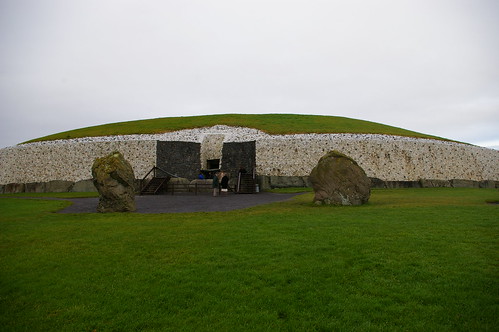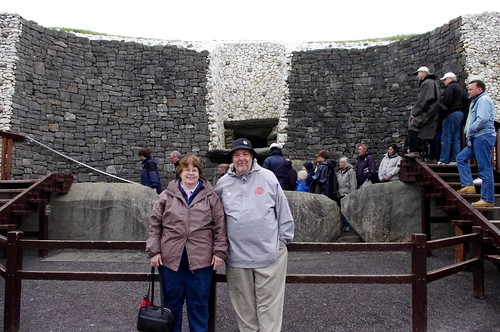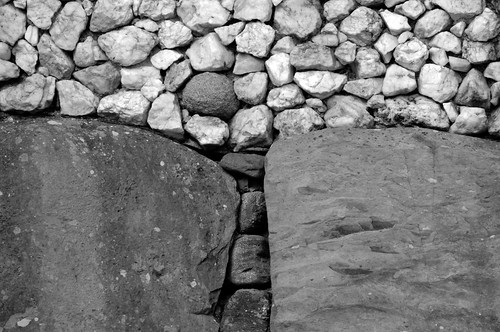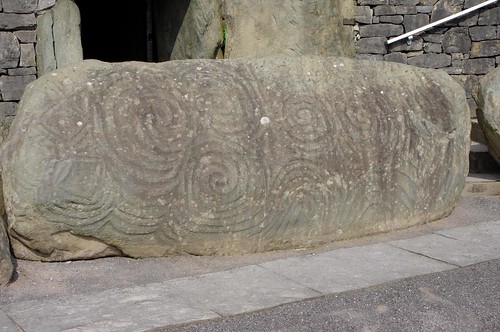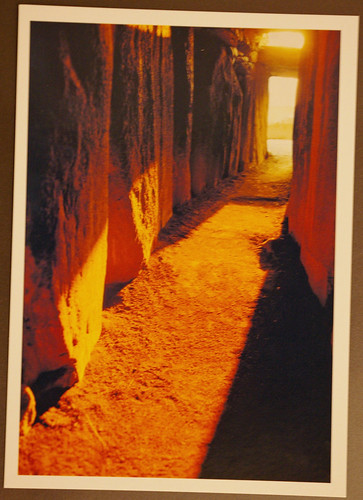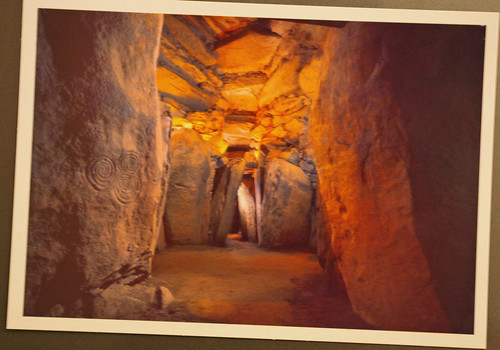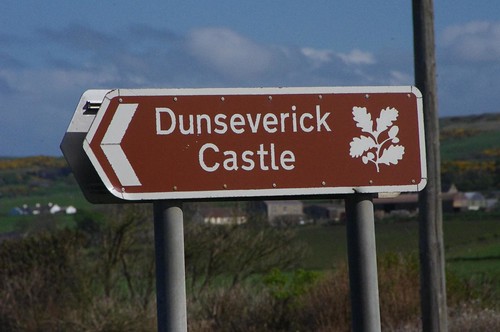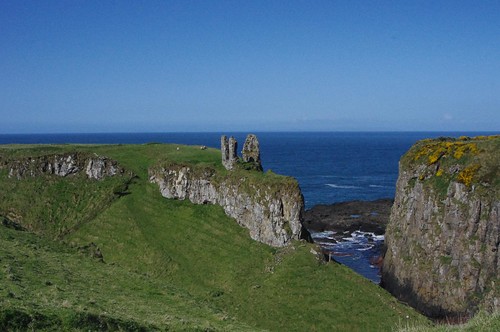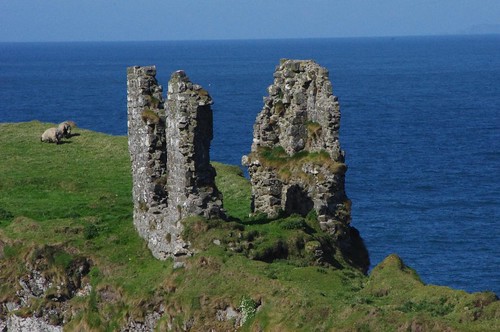
Up in the Boyne Valley, about an hour North of where I live in Dublin, is a place that has been inhabited for thousands of years. It’s known as the Boyne Valley. It’s mostly small farming communities filled with sheep and horses, and encompasses parts of two counties – Meath and Louth. I’ve already posted about the Hill of Tara, which is located here, and also the Hill of Slane. Just up the road is the New Grange Passage tomb. Another of the historic places that are located in this valley are even older than those. They are a set of 3 ancient mounds that are collectively known as Passage tombs – New Grange, Knowth, and Dowth (pronounced know-th and dough-th). Dowth isn’t open to the public, and Knowth is only opened during the summer months, because of the delicate nature of the tombs.
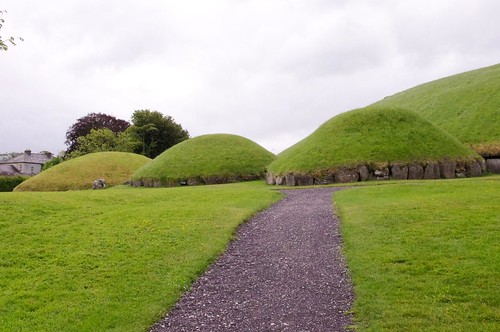
Knowth is the largest of all passage graves situated within the Brú na Bóinne (Boyne Valley Tomb) complex. The site itself consists of one large mound and 17 smaller satellite tombs, and I’ve only made it to visit here once (I’ve been to New Grange 4 times now). The largest mound at Knowth has been esitimated to date from between 2500 and 2000 BCE, about 5000 years ago (Again, older than the Egyptian Pyramid at Giza) with the satellite mounds ranging in age from the same time. The outside and inside of the largest mound is one of the largest repositories of Megalithic artwork carved on stone.

Similar to the complex at New Grange, on the front half of the tomb used to be made up of sparkling white quartz which was brought in from about 80 km away in the Wicklow Mountains. However, unlike the New Grange complex, this has not been fully restored. The main hill has been partially excavated and reinforced, but the quartz outside of the building remains as rubble around the exterior. Additionally, only a portion of the 17 satellite mounds have been dug out and reinforced.

Essentially, what happened was that over time, earth collected around the mounds and erosion caused the soil / turf on top of the mounds to gradually sluff off. The result was that until the 1700’s most people just thought that these were simply giant “hills”. In the 1600-1700’s, portions of the tombs were dug up for rock (to use for building) and other portions were plowed under for farming. As time went on, it was realized to be a historical site and archaeologists became interested in the area.

Excavations and partial restoration have resulted in a safe site to visit, with many artifacts now housed in a museum and visitor center nearby. Some of the artifacts include a beautiful mace head, a carved basin stone (for housing remains), and tools from the various uses of the site. (After the ancients went away, the complex was used during the iron age for housing and also as a fortress.)
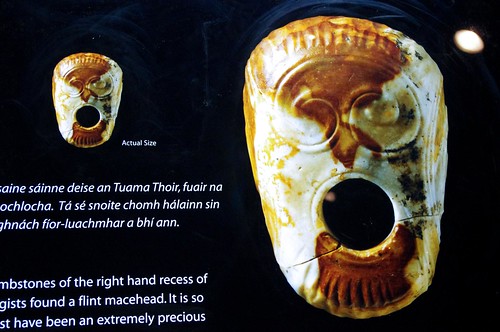

Eventually, Knowth and the other megalithic sites of the Boyne Valley were designated a World Heritage Site by UNESCO. For more Pictures of this site, please see my flickr set.


